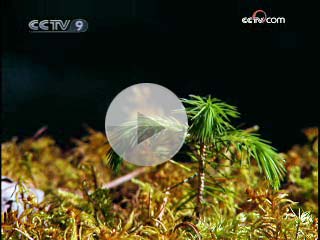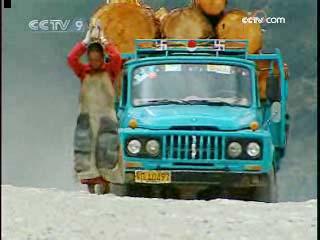------Program code: NS-080828-03274 (what's this?)
Source: CCTV.com
08-28-2008 13:59
The Xi wanders aimlessly down from the meadow to the forest. The little red deer is embraced by Nanjiabawa.
 |
At dusk, the deer return. But the Xia cannot see her child on the meadow.
After sunset, the thin atmosphere is unable to retain much heat. The temperature drops rapidly. At this time of year the temperature variation between day and night can be as much as 20 degrees.
 |
It’s hard for the Xi to digest the food in the forest. This is the place where he should spend the winter.
The Xi heads back to the meadow, looking for some tender grass and his mother.
At the other end of the Brahmaputra, water from the Indian Ocean is vaporized into a warm and humid air mass, which heads north along the Brahmaputra valley.
In the southern part of the valley, the annual rainfall is 4000 mm. This creates an oasis at 4,000 metres, with scenery that is like nowhere else on the icy desert of the Tibetan Plateau.
In July and August, eighty per cent of the annual rainfall descends on southeastern Tibet.
There is a sudden drop in temperature. The cold restricts the Cang Qiong’s breathing and growth. After the rain, the spruce forest is a gloomy, humid place. With a humidity level of 80%, it seems to be raining even on a fine day.
Beneath the trees, the plants that enjoy shade, such as the lichen and shield fern, grow rapidly.
In summer, the cloudy weather can last for weeks at a time.
Once the sun appears, the lichen near the Cang Qiong will grow towards it.
The Cang Qiong is sheltered by the old spruces’ shadow; but the sunshine that filters through the cover of the leaves is no longer sufficient to support him.
The Xi is petrified by the golden eagle’s huge shadow. He is able to recognize danger now.
The glacier melts and forms a small river, which is protecting the Xi.
The small river flows past the Xi to the Cang Qiong’s forest, and then on to join the surging Brahmaputra.
A spruce can live for 500 years. Its wood is light and soft with a straight texture that makes it ideal for construction and bridge building.
The felling of spruces in southeastern Tibet is being brought under control step by step. Even so, the pilgrims will see the occasional timber truck.
The chanting of sutras from Niguo Temple is heard again from deep inside the forest. The monks consider the forest to be god’s gift; they believe every tree and blade of grass in it to be a living being.
The air current over the peak of the Nanjiabawa is turned into mist. It flows over the meadow and arrives in the virgin forest. Summer has lasted just two months here, and now the gloomy weather has returned.
In September, the leaves in the broadleaf forest change color. However, autumn has no effect on the spruces’ needle leaves.
The summer has been good for the Cang Qiong. He is now tall and straight. A new sprout has appeared on the trunk, indicating that a new branch is growing.
The spruce beside the Cang Qiong is over ten years old. Yet it remains small and weak.
Forest experts call it a Pressed Tree. Without sufficient sunshine, the tree cannot grow any higher, and it is likely to die within 20 years.
Will the Cang Qiong share the same fate?
In autumn, the spruces’ cones are fully grown. Each contains more than 20 seeds, ready to sprout.
The meadow is transformed, too.
Editor:Yang
